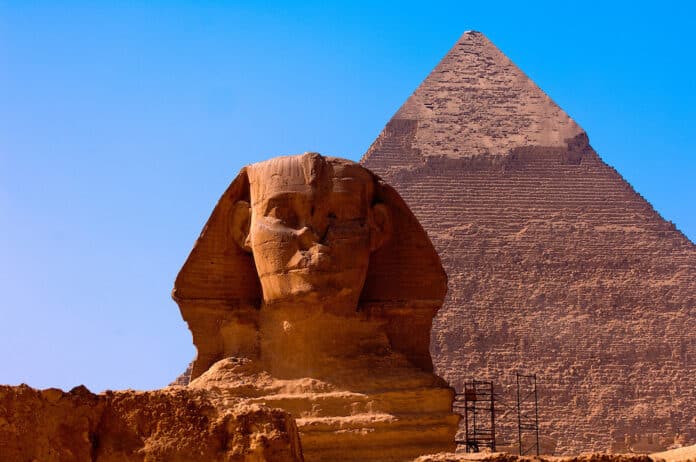Out of the seven wonders of the ancient world, only one stood the test of time and still exists in the modern world. If you’re clueless, fear not. You shall know by the end of this article.
What Are The Seven Wonders?
The Seven Wonders of the Ancient World, also known as the Seven Wonders of the World or simply the Seven Wonders, is a compilation of seven notable structures that existed in the old ages. The times of Sodom and Gomorrah. Of Jews and Pharisees. The first known list of seven wonders dates back to the 2nd–1st century BC.
Yes, they are that ancient.
I learned a lot about the seven wonders of the world back in high school. Not from my teachers, of course (what do they know?) but from books of fiction, nonfiction, and even literature. I always dreamed of going to such places, but of course, that wasn’t possible. Not unless I had a Time-Turner. Or was friends with Professor Paradox.
Related: Most beautiful places to visit in Nigeria for Holidays
Meet the Wonders Of The Ancient World
Now, we will discuss the seven wonders of the ancient world. What they were, where they were, and if they still exist today.
The Mausoleum Of Halicarnassus
If the dead could choose a final resting place, it’d be here.
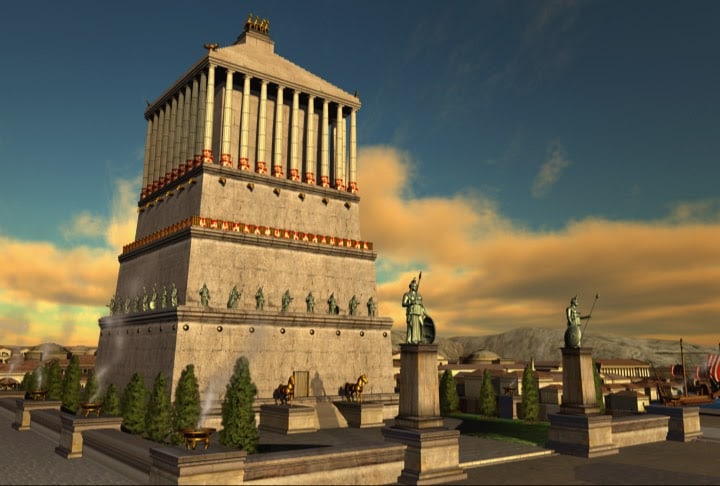
The Mausoleum of Halicarnassus is among the most impressive structures to ever house the deceased. It was designed between 353 and 350 BCE by the Greek architects Satyrus and Pythis. Artemisia, the wife of Mausollus, king of Anatolia, initiated its construction upon her husband’s death.
The mausoleum stood at approximately 41 meters (135 feet) high, adorned with intricate exterior carvings and precious works of art. Despite standing for centuries and even surviving a raid by Alexander of Macedonia, a series of earthquakes finally rocked it to its core. All that remains are a few scattered pieces of its foundation.
The ruins of the monument exist in modern-day Turkey.
READ: Top 10 Beach Resorts in Lagos
The Colossus of Rhodes
An infamous sculptor, Chares of Lindos, erected the monument in a bid to honor the defeat of the invading army of Demetrius in 304 BCE. The Colossus of Rhodes is a statue bearing the likeness of the Greek god, Helios (do your research) and Chares built it within the periods of 292 and 280 BCE. It existed in the city of Rhodes, an island in the Aegean Sea.
The Colossus of Rhodes was such an outstanding architectural feat that people called it the “second sun”.
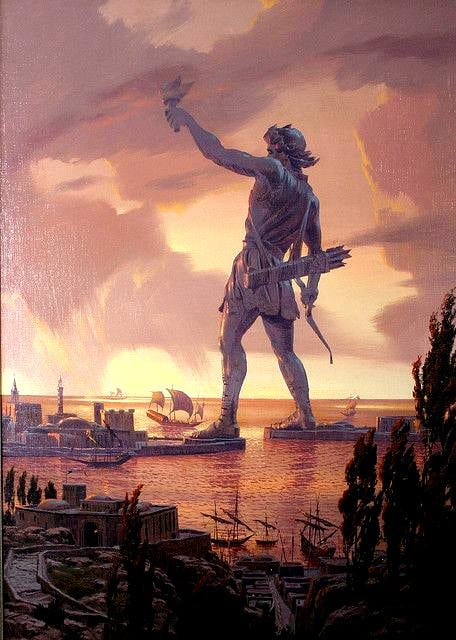
After standing for only 56 years, an earthquake destroyed the statue in 224 BCE. Despite snapping at the knees and falling onto the island, the ruins remained a popular attraction for more than 800 years.
Related: 12 of the most fantastic Places in Africa
The Hanging Gardens of Babylon
Though some people describe them as marvelous feats of agricultural engineering, there isn’t much evidence to show that these gardens ever existed. Among the seven wonders of the ancient worlds, this is the wonder most doubted, and for good reason.
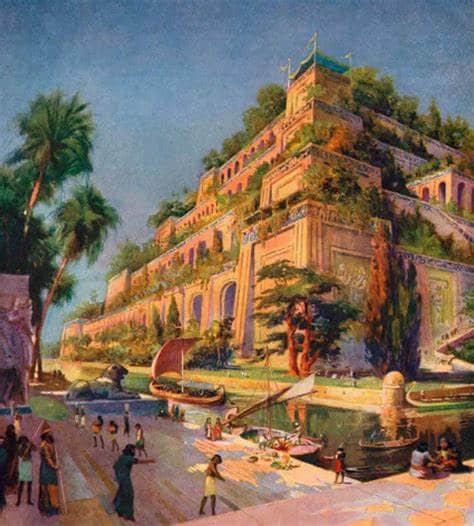
Those who claimed to have witnessed the gardens, including Greek historians Strabo and Diodorus Siculus, along with Phylo of Byzantium, can only tell us that an amazing array of blooming flowers, luscious fruit, impressive foliage, and crystal-clear waterfalls filled these gardens. King Nebuchadnezzar of Babylon built the hanging gardens around 600 BCE.
Related: Fascinating Places in the World
The Temple Of Artemis
“I have seen the walls and Hanging Gardens of ancient Babylon, the statue of Olympian Zeus, the Colossus of Rhodes, the mighty work of the high Pyramids, and the tomb of Mausolus. But when I saw the temple at Ephesus rising to the clouds, all these other wonders were put in the shade.” — Phylo of Byzantium
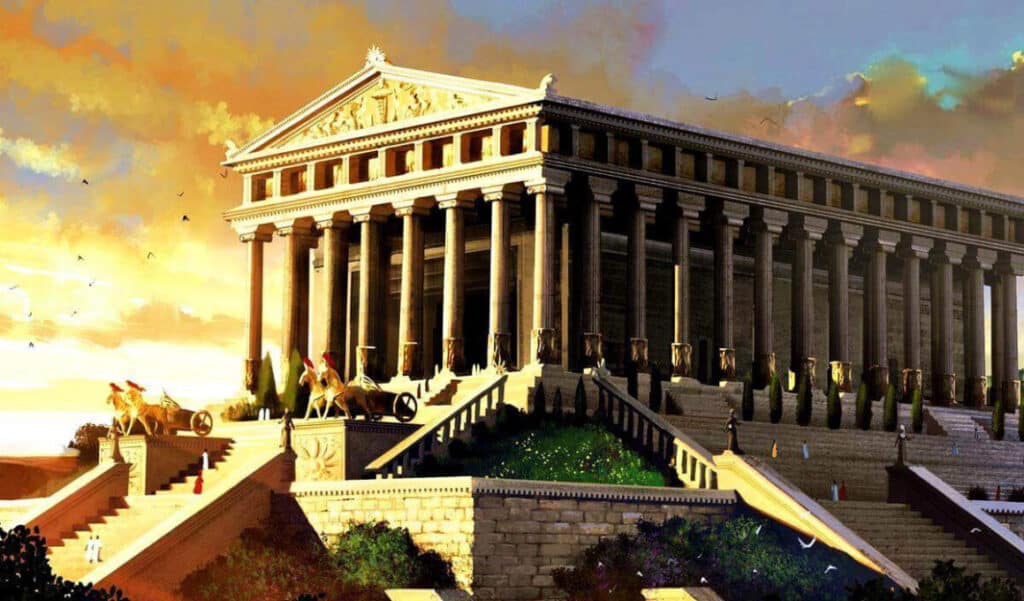
My toes curl with envy!
The Temple of Artemis, also called Artemesium, at Ephesus (now western Turkey) is another one of the Seven Wonders of the World.
Croesus, king of Lydia, built the temple in 550 BC. In 356 BC, a madman named Herostratus put his arson skills to the test and set the monument ablaze. A waste of effort if you ask me because it was later rebuilt. The Artemesium was famous not only for its great size (standing over 350 by 180 feet, about 110 by 55 meters), but also for the magnificent works of art that adorned it.
Sadly, the temple was destroyed again by invading Goths in 262 CE, but this time no good Samaritan came to its aid. Little remains of the temple (though there are many fragments, especially of sculptured columns, in the British Museum) in the modern world today.
The Lighthouse of Alexandria
By order of similarity, lighthouses in the modern world still pay homage to their ancestor. The Lighthouse of Alexandria, which existed in the city of Pharos in ancient times, is a technical masterpiece.
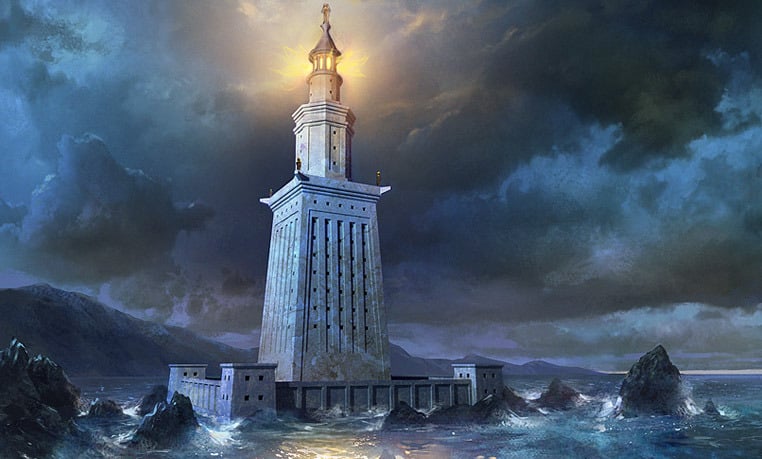
It was built between 285 and 247 BCE, standing at over 107 meters tall, and a navigational landmark for voyagers along the Egyptian coast. Of course, architecture was the most fascinating thing about this sculpture.
There was a square stone base, an octagonal middle section, and a cylindrical section at the top. At the apex, they erected a mirror to reflect sunlight during the day. At night, they lit a fire to guide travelers.
Sadly, this masterpiece did not have a long lifespan. A series of earthquakes severely damaged the monument in 965 CE, 1303 CE, and 1323 CE. By 1480 CE, it completely disappeared. What remains of the site today is the Egyptian fort Qaitbay, which they built using some of the stones from the lighthouse ruins.
Related: Fascinating Places in Nigeria
The Statue of Zeus
As a Percy Jackson fan whose favorite god is — you guessed it — I have to say that missing out on this wonder is one big regret. The renowned sculptor Phidias built the Statue of Zeus around 435 BCE in Western Greece.
Enormous and regal, it rested in the temple, drawing eyes both near and far.
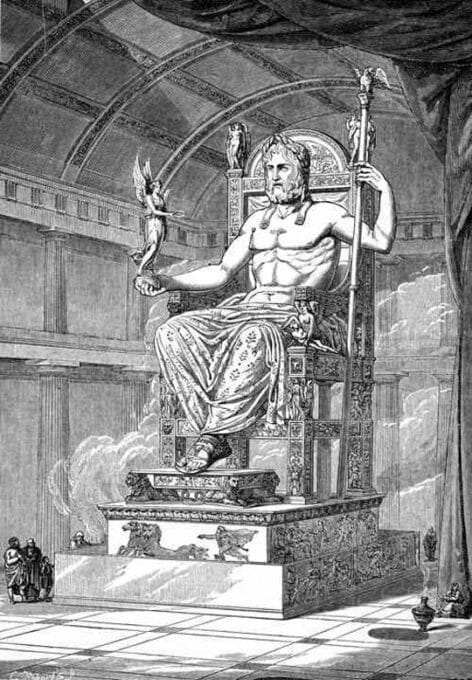
The details were simple yet elegant. Zeus held a statue of Nike, the goddess of victory, in his right hand. His left hand held a scepter topped with an eagle. A stunning earthly representation of the great god of thunder, the statue filled its audiences with awe.
Sadly, an earthquake destroyed it sometime in the fifth century BCE.
SEE ALSO: The 10 Best Resorts in Abuja for 2023
The Great Pyramid of Giza
We come to the last, but certainly not the least. I’ll assume you didn’t miss the word “great.”
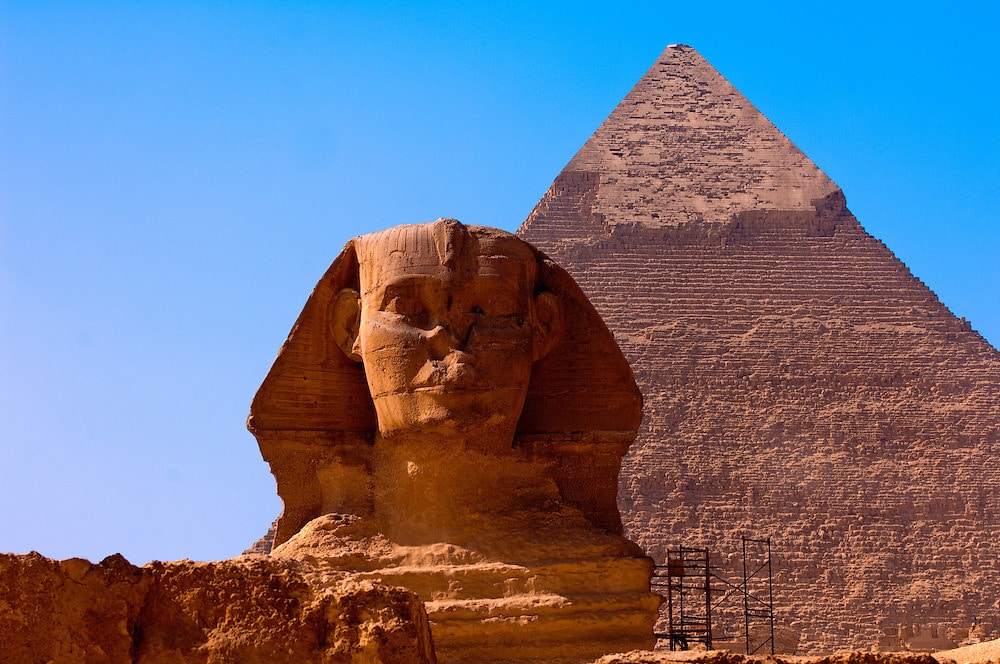
The Pyramid of Giza resides in Egypt. Yes, I say “resides” because it still exists. Among the seven wonders of the ancient world, this is the only wonder that still remains in the modern one. Humans — though we do have voices that say otherwise — erected the monument around 2560 BCE on the west bank of the Nile River, to serve as the final resting place of Pharoah Khufu.
It has stood for nearly 4000 years.
The proportions of the Pyramid are colossal — even for the modern era. The original height from the base to the peak was around 147 meters (482 feet). Time has worn away the height to around 138 meters (451 feet). The length of each side at the base averages around 230 meters (756 feet). Over its 20-year construction period, around 2.3 million stone blocks were crafted to create this gargantuan monument.
You can watch some of the videos here for an insider’s tour of the Great Pyramid of Giza.
Related: 7 Tourist Attractions in Africa You Need to Visit
To Wrap Up:
While these constructions are stunning achievements of ancient engineering, they don’t include marvels from many of the ancient civilizations of Europe, Asia, and the Americas. All these places were unknown to the Hellenic peoples.
Although many still exalt the Seven Wonders today, their eradication over time proves the fleeting nature of even the grandest physical achievements.
It projects a strong message: nothing lasts forever. And before I leave you, also check out our list of the new world’s seven wonders. Hope you enjoyed my debut class on Ancient History 001?
If you have any questions or remarks, please comment below.



